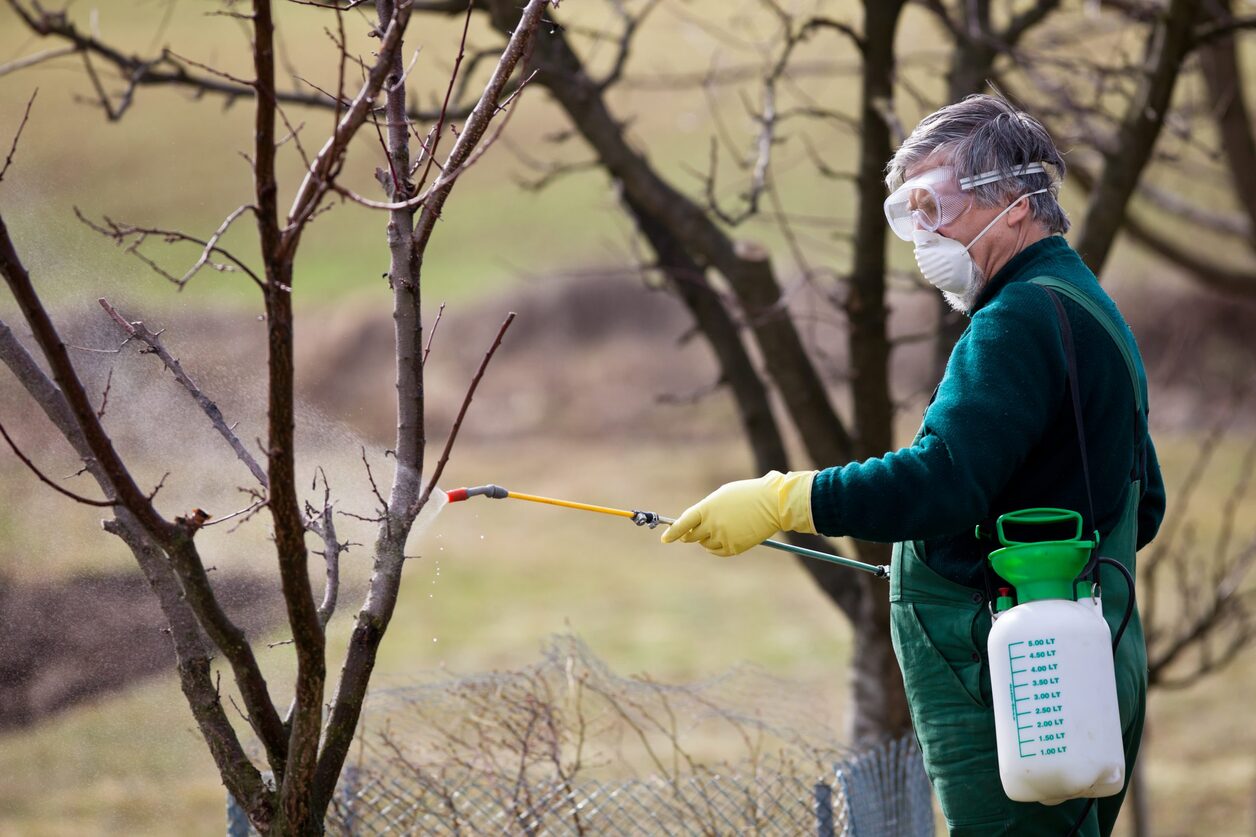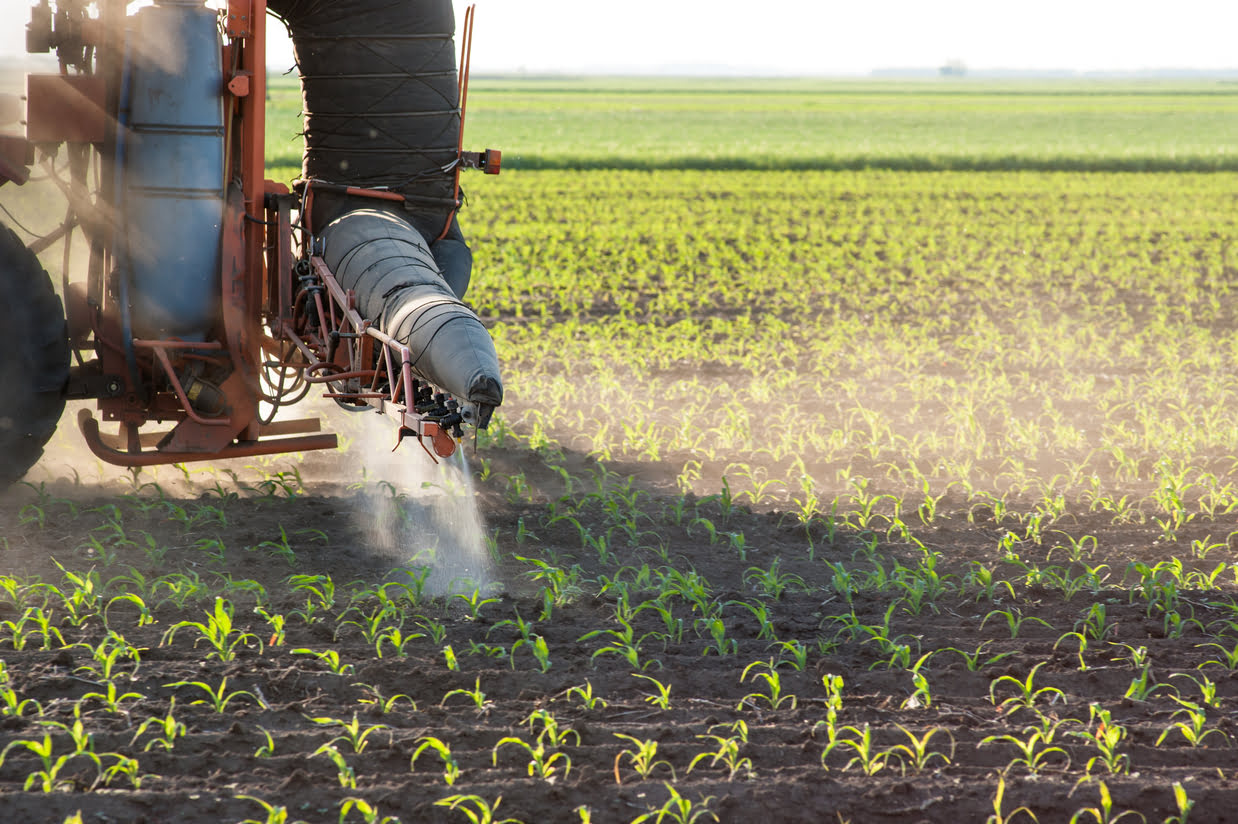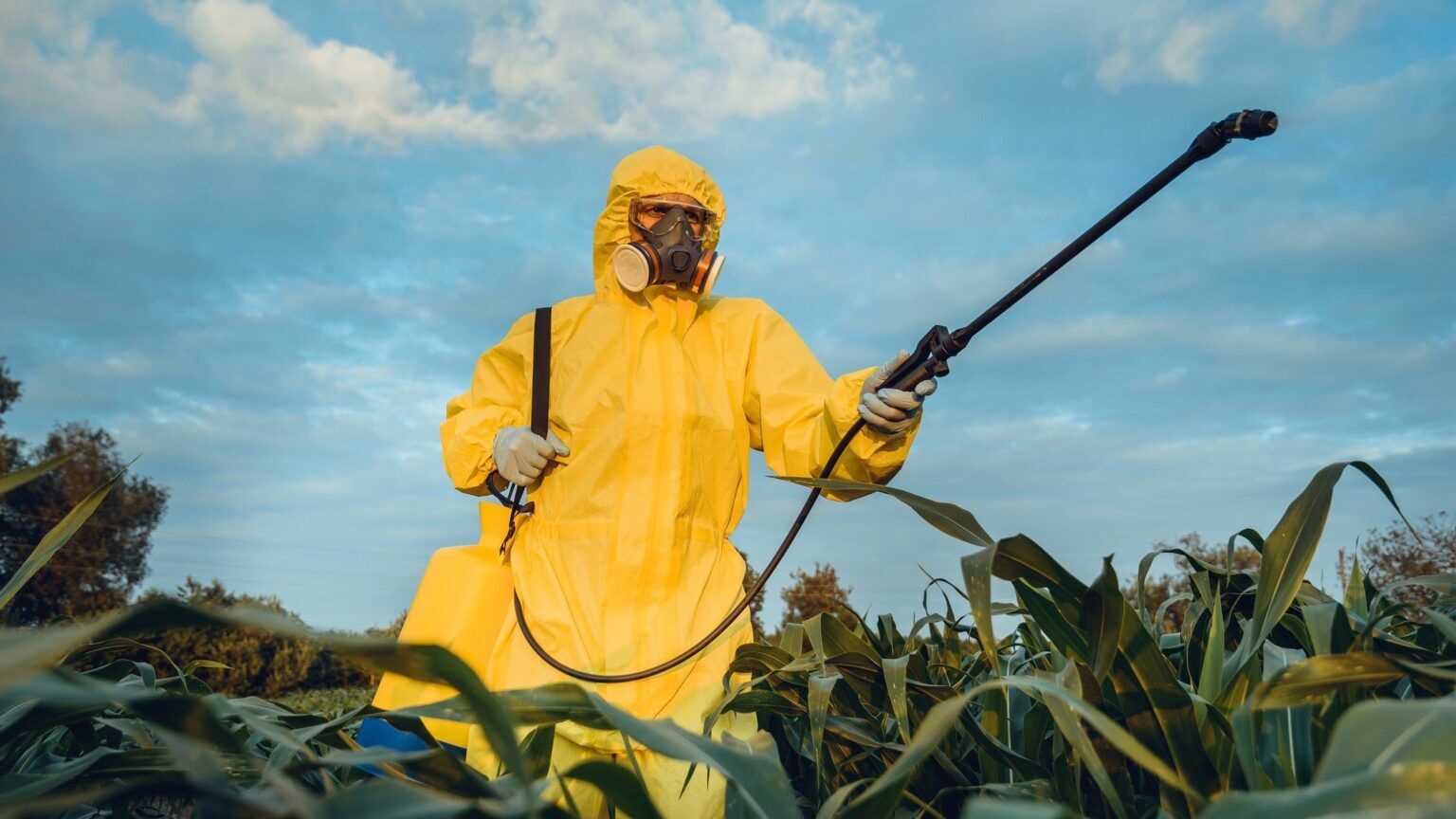Home>Gardening News and Trends>Latest News>What Pesticides Are Neonicotinoids?


Latest News
What Pesticides Are Neonicotinoids?
Modified: February 10, 2024
Explore the latest news on neonicotinoids, a type of pesticide, and understand their impact on the environment and pollinators. Stay informed with our informative articles and updates.
(Many of the links in this article redirect to a specific reviewed product. Your purchase of these products through affiliate links helps to generate commission for Chicagolandgardening.com, at no extra cost. Learn more)
Table of Contents
Introduction
Neonicotinoids are a widely used class of insecticides that have gained significant attention and controversy in recent years. These insecticides belong to the nicotine-derived chemical family and are known for their effectiveness against a wide range of insect pests. Neonicotinoids were first introduced in the 1990s as a safer alternative to other insecticides, but their impact on the environment and the potential risks they pose to human health have been the subject of intense debate.
With the growing concern over the decline of bee populations and other pollinators, neonicotinoids have been a major focus of research and regulation. The effects of these pesticides on bees and other beneficial insects are particularly concerning, as they can disrupt their reproduction, navigation, and overall health. This has raised alarm bells among environmental advocates, farmers, and scientists who are calling for stricter regulations and alternatives to neonicotinoids.
In this article, we will explore what neonicotinoids are, how they work, the common pesticides in this class, their environmental impact, the potential health effects of exposure, and the controversies surrounding their use. By understanding the complexities surrounding neonicotinoids, we can make informed decisions about their use and explore more sustainable approaches to pest management.
What are Neonicotinoids?
Neonicotinoids, often referred to as neonics, are a class of systemic insecticides that are chemically similar to nicotine. They were developed in the 1990s as a replacement for older, more harmful insecticides. Neonicotinoids are designed to target the central nervous system of insects, causing paralysis and ultimately leading to their death.
One of the distinct characteristics of neonicotinoids is their systemic nature. When applied to crops, these insecticides are absorbed by the plant’s tissues, including the leaves, stems, and roots. This allows the chemical to be spread throughout the entire plant, providing protection against pests that feed on various parts of the plant, such as aphids, beetles, and caterpillars.
Neonicotinoids come in various formulations, including seed coatings, sprays, and granules. Seed coatings, in particular, are commonly used in agriculture, where the pesticide is applied directly to the seeds before planting. As the plant grows, the chemical is transported to all parts, including the pollen and nectar. This has raised concerns regarding the potential exposure of bees and other pollinators to neonicotinoids.
Unlike contact insecticides that require direct contact with the insect to be effective, neonicotinoids can be taken up by insects through ingestion, contact, and even through the plant’s vascular system. This systemic property makes them highly effective in combating pests that are difficult to reach through traditional contact insecticides.
Neonicotinoids have become the most widely used class of insecticides globally, with applications spanning agricultural crops, horticulture, and even residential pest control. They offer benefits such as increased crop yields, reduced reliance on older, more toxic insecticides, and improved convenience for farmers and gardeners. However, their widespread use has also raised concerns about their environmental impact and potential effects on human health.
How do Neonicotinoids work?
Neonicotinoids work by targeting the central nervous system of insects, specifically the receptor sites that interact with the neurotransmitter acetylcholine. When insects are exposed to neonicotinoids, these insecticides bind to specific receptors, causing overstimulation and disruption of nerve signals. This leads to paralysis and ultimately death in the affected pests.
Neonicotinoids are known as agonists, which means they bind to the acetylcholine receptors and activate them, but they do not break down like the natural acetylcholine. As a result, the nerve signals become abnormally intense and prolonged, leading to the disruption of essential functions, such as feeding, reproduction, and coordination. This mechanism of action makes neonicotinoids highly effective at controlling a wide range of crop-damaging pests.
Another feature that contributes to the effectiveness of neonicotinoids is their systemic nature. When neonicotinoids are applied to plants, they are absorbed and transported throughout the plant’s vascular system. This means that the chemical is distributed to all parts of the plant, including leaves, stems, and flowers. As a result, insects feeding on different parts of the plant can come into contact with the pesticide, increasing its efficacy and reducing the need for multiple applications.
Furthermore, the systemic properties of neonicotinoids also extend their protection to the seeds. When used as seed treatments, the insecticide is applied to the seed coating. As the seed germinates and grows, it takes up the chemical, making the entire plant toxic to pests that feed on it. This method is particularly effective for protecting the early stages of plant growth when they are most vulnerable to insect damage.
It is worth noting that while neonicotinoids are highly effective against pests, including aphids, beetles, and caterpillars, they do not distinguish between harmful insects and beneficial ones. This lack of selectivity is one of the concerns raised regarding neonicotinoids and their impact on non-target organisms.
Overall, neonicotinoids’ dual action of targeting the insect’s central nervous system and their systemic properties make them a powerful tool in pest control. However, this effectiveness comes with potential risks to the environment and non-target organisms, which we will explore further in the following sections.
Common Neonicotinoid pesticides
There are several commonly used neonicotinoid pesticides that are widely employed in agricultural practices, horticulture, and even residential pest control. These pesticides have different chemical structures and trade names, but they all belong to the neonicotinoid class of insecticides. Here are some of the most prevalent neonicotinoid pesticides:
- Imidacloprid: Imidacloprid is one of the most widely used neonicotinoid insecticides and has a broad spectrum of activity. It is used in agriculture to control various pests, including aphids, thrips, and leafhoppers. Imidacloprid is also commonly found in products used for flea and tick control for pets.
- Clothianidin: Clothianidin is another commonly used neonicotinoid pesticide and is often used as a seed treatment for a wide range of crops, including corn, soybeans, cotton, and canola. It offers systemic protection against pests, including insects that attack the roots and those that feed on the above-ground parts of the plant.
- Thiamethoxam: Thiamethoxam is similar to clothianidin and is used as a seed treatment as well. It provides protection against pests such as beetles, aphids, and thrips in crops like soybeans, corn, and wheat. Thiamethoxam is also used in a variety of professional and consumer insecticides.
- Acetamiprid: Acetamiprid is a neonicotinoid pesticide commonly used in agriculture and horticulture. It has a broad spectrum of activity and is effective against aphids, whiteflies, and beetles. Acetamiprid is used in various forms, including sprays, granules, and seed treatments.
While these are a few of the widely used neonicotinoid pesticides, it’s important to note that there are other neonicotinoid compounds available on the market, each with its own specific properties and trade names.
It is crucial to understand and properly identify the neonicotinoid pesticides present in different products, as they may have varying levels of toxicity and persistence, which can impact the environment and non-target organisms. Monitoring and regulating the use of neonicotinoids is vital to mitigate potential risks and ensure the sustainable management of pests.
Environmental impact of Neonicotinoids
The use of neonicotinoid pesticides has raised significant concerns about their impact on the environment, particularly on pollinators and aquatic ecosystems. Here are some key environmental impacts associated with neonicotinoids:
1. Harm to pollinators: One of the most concerning impacts of neonicotinoids is their potential harm to pollinators, such as bees and butterflies. These insecticides can contaminate nectar and pollen, which are essential food sources for pollinators. Even low levels of exposure to neonicotinoids can impair the reproduction, navigation, and foraging behavior of bees, leading to decreased colony health and increased mortality.
2. Threat to beneficial insects: Neonicotinoids can also harm beneficial insects, such as ladybugs, lacewings, and parasitic wasps, which play a crucial role in natural pest control. These beneficial insects are often exposed to neonicotinoids through contaminated plant tissues or through direct contact with treated surfaces, which can disrupt their populations and negatively impact ecosystem balance.
3. Contamination of water bodies: Neonicotinoids are highly soluble in water and have been detected in rivers, streams, and other bodies of water. Runoff from fields treated with neonicotinoids can carry the insecticides into nearby streams and rivers, where they can accumulate and persist for long periods. This can have detrimental effects on aquatic organisms, such as fish and invertebrates, leading to reduced biodiversity and ecosystem disruption.
4. Soil contamination: Neonicotinoids can persist in the soil for extended periods, especially when used as seed treatments. This can result in the accumulation of these insecticides in the soil, potentially affecting non-target organisms like earthworms, soil bacteria, and fungi. Changes in soil ecosystems can have cascading effects on plant health, nutrient cycling, and overall soil fertility.
5. Resistance development: Continuous and widespread use of neonicotinoids can contribute to the development of insecticide resistance in targeted pest populations. This resistance can reduce the effectiveness of these pesticides, leading to increased use and potential risk of environmental exposure.
To mitigate the environmental impact of neonicotinoids, there has been a growing call for more sustainable pest management practices. This includes promoting integrated pest management strategies that prioritize non-chemical approaches, such as crop rotation, biological control, and the use of insect-resistant crop varieties. Furthermore, strict regulations and monitoring programs can help minimize the use of neonicotinoids and ensure that their application is targeted and necessary.
Health effects of Neonicotinoid exposure
The potential health effects of neonicotinoid exposure have been a topic of concern and extensive research. While the primary focus has been on the effects of these insecticides on pollinators and other non-target organisms, studies have also investigated the risks to human health. Here are some of the key findings:
1. Acute toxicity: Neonicotinoids are known to have low acute toxicity to humans, meaning that they are unlikely to cause immediate harmful effects in healthy individuals at typical exposure levels. However, it is important to note that acute toxicity can vary depending on the specific neonicotinoid compound and the formulation.
2. Chronic exposure: The potential health risks of neonicotinoids mainly come from chronic, low-level exposure over extended periods. Prolonged exposure to the insecticides has been associated with various health effects, including developmental and reproductive issues, neurological effects, and endocrine disruption.
3. Endocrine disruption: Some studies have suggested that neonicotinoids may have endocrine-disrupting properties, meaning they can interfere with hormone systems in humans and wildlife. Certain neonicotinoids have been shown to bind to hormone receptors and affect their function, potentially leading to developmental abnormalities, altered reproductive function, and other long-term health effects.
4. Neurotoxicity: Neonicotinoids are designed to target the nervous systems of insects, and there is evidence to suggest that they may also have neurotoxic effects in humans. Studies have linked neonicotinoid exposure to cognitive impairments, memory deficits, and changes in behavior. However, more research is needed to fully understand the extent of these effects and the potential risks to human health.
5. Accidental poisoning: While neonicotinoids are generally considered safe when used as directed, there have been instances of accidental poisoning in humans, particularly through improper handling or misuse. The symptoms of neonicotinoid poisoning can range from mild irritation to more severe reactions, including nausea, dizziness, difficulty breathing, and in extreme cases, seizures or even death.
It is important to note that the health risks associated with neonicotinoid exposure to humans are still being studied, and more research is needed to establish clear causative relationships. Regulatory agencies, such as the Environmental Protection Agency (EPA), continue to assess the risks and establish guidelines for the safe use of neonicotinoids in different settings.
To minimize exposure to neonicotinoids, individuals should follow proper handling and safety protocols when using products containing these insecticides. Additionally, supporting organic and sustainable farming practices can reduce reliance on synthetic pesticides and promote healthier food systems.
Neonicotinoid regulation and controversy
The use of neonicotinoids has sparked significant controversy and led to the implementation of regulations and restrictions in various countries. The concerns surrounding their potential impacts on pollinators, aquatic ecosystems, and human health have prompted calls for more stringent controls. Here are some key developments in neonicotinoid regulation:
1. Europe’s neonicotinoid ban: In 2013, the European Union (EU) implemented a partial ban on the use of neonicotinoids on flowering crops attractive to bees. This ban restricted the use of three neonicotinoid insecticides – clothianidin, imidacloprid, and thiamethoxam – on crops such as corn, oilseed rape, and sunflowers. The ban was introduced as a precautionary measure due to concerns about potential harm to bees and other pollinators.
2. Global regulatory actions: In addition to the EU, several other countries have implemented regulations and restrictions on neonicotinoid use. Canada has placed restrictions on the use of some neonicotinoids, and Australia has imposed regulations on their use in seed treatments. The United States has also limited the use of neonicotinoids in certain applications and is currently conducting risk assessments to determine their potential effects on pollinators.
3. Pesticide label changes: In response to growing concerns, regulatory agencies have made label changes to neonicotinoid products to reflect updated restrictions and recommendations. These changes may include additional instructions for use, restricted application timing, and increased warnings about potential risks to pollinators and aquatic organisms.
4. Scientific debates and industry perspectives: The regulation of neonicotinoids has been the subject of scientific debates and industry perspectives. While some studies support the notion that neonicotinoids pose significant risks to pollinators and ecosystems, others argue that these risks have been exaggerated and that neonicotinoids are essential for crop protection. The involvement and influence of industry stakeholders in the regulatory process have also been points of contention.
5. Potential alternative approaches: The controversy surrounding neonicotinoids has prompted increased interest in finding alternative approaches to pest management. This includes exploring organic farming practices, promoting integrated pest management strategies, and developing new pest control technologies and products that are less harmful to pollinators and non-target organisms.
The regulation of neonicotinoids is an ongoing process that requires balancing the need to protect the environment and pollinators with the demand for effective pest control in agriculture. Continued research, monitoring, and collaboration among scientists, regulators, and stakeholders are essential in addressing the controversies surrounding neonicotinoid use and finding sustainable solutions for pest management.
Conclusion
Neonicotinoids have become a topic of intense scrutiny and debate due to their widespread use, potential impacts on pollinators and ecosystems, and potential risks to human health. These insecticides have undoubtedly provided benefits in terms of effective pest control, increased crop yields, and convenience for farmers and gardeners. However, their environmental impact and potential health effects cannot be ignored.
Studies have indicated that neonicotinoids can harm bees, butterflies, and other beneficial insects, disrupt aquatic ecosystems, and pose potential risks to human health, particularly with chronic exposure. The regulations and restrictions imposed by various countries reflect the growing concerns and aim to balance the need for pest control with the protection of pollinators and the environment.
It is crucial to continue research and monitoring to further understand the impacts of neonicotinoids and develop sustainable approaches to pest management. This includes promoting integrated pest management strategies, exploring alternative farming practices, supporting organic agriculture, and investing in the development of safer and more targeted insecticides.
Individuals can also contribute to reducing neonicotinoid exposure by following proper handling procedures, supporting sustainable farming practices, and advocating for stricter regulations. Protecting pollinators and preserving biodiversity is not only essential for our food systems but also for the health of our ecosystems as a whole.
As we move forward, striking a balance between effective pest management and safeguarding the environment will be key. By prioritizing sustainable alternatives and implementing responsible pesticide use, we can work towards a future where pollinators thrive, ecosystems flourish, and human health is protected.










